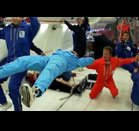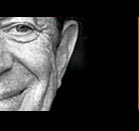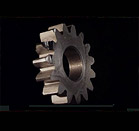english
/ all you need to know about our productions
![]()
![]()
DNA : Taylored Humanity (60')
In 2012, two women, Jennifer Doudna and Emmanuelle Charpentier discovered a molecule that makes it possible to modify with accuracy our genetic makeup. Its name is CRISPR-Cas9 (crispercass9). We are now able to cut, paste and replace portions of the DNA of any living cell, and particularly of a human cell.
This discovery has opened up large fields of research and awakened new hopes - and new fears. We now have the power to modify our own human species. We can now also imagine new therapies to eradicate cancer, AIDS and cystic fibrosis, and even to slow down the aging of our cells…
How many of these perspectives are really viable?
This film covers the latest research and new therapies that have become possible with this wondrous discovery.
ADAV AWARD at PARISCIENCE FESTIVAL 2018
![]()
![]()
![]()
Dynamic Salt (52')
Only 14 % out of the 250 million tons of salt collected every year globally is used for food. What happens to the rest?
Our film explores the most unexpected and innovative uses of salt and seawater: producing energy out of it!
We will explore the latest research on seawater and the way scientists all over the world are working on "Blue Energy". This research could bring about a major change in our time...
![]()
![]()
![]()
Donkey Tales (52’)
The film tells us the surprisingly unreleased story of a humble, discreet and little known animal even though it is very close to humans: the domestic donkey.
An amazing enquiry leads us all over the planet, with Jacky Davézé , an erudite that has a reputation as a talented ‘donkey whisperer’.
And we will finally discover the fabulous ancestor of all domestic donkeys, the African wild ass, still living freely in the Danakil desert (Eritrea).
![]()
Dynamic Salt (52') Our film got the Student Jury Award at Pariscience 2016 !
![]()
For a basket of truffles The Périgord - a region in the South West of France – developed in the 19th and 20th centuries thanks to trade in the “black diamond”. But this fragile tuber and rustic product is also adapting to modern civilisation. Its market is becoming globalised, its origins are diversifying and the old truffle cultivators are transforming themselves into tableaux vivants in the interests of international commerce. But who says that the truffle must be eaten, when its fragrance alone is enough to make the world dream?
![]()
A Natural History of Laughter For how long have we been laughing? Are human beings the only one to laugh? We know that bonobos, chimpanzees and orangutans also enjoy having a good laugh, especially when tickled. What are the latest discoveries about neuronal and ethological origins of laughter? This 52 mn film is about why and how we laugh, a scientific and behavioral approach about laughter. It sure will make you laugh but not only in the way you expect
![]()
György Sebök, music as a mother tongueGyörgy Sebök was a great teacher. One of those who liked suggesting a path and let time do the rest. You had to listen attentively when he started to analyse your touch because his words were essential and would impact your interpretation even many years later. For the 10th anniversary of his death, Altomedia pays tribute to György Sebök through a documentary made of unreleased interviews and footage of masterclasses in Ernen (Switzerland).
![]()
Neuromarketing, citizens under the influence? Because market studies don’t guarantee the success of a product, marketers now turn to neurosciences. With techniques as the MRi, their objective is to decode the subconscious part of our brain to know our desires better. This film examines this new avatar of consumer society
![]()
Vauban, the soldier who shaped FranceIn light of the tercentary of the death of Sebastien Le Prestre de Vauban, Louis the Fourteenth’s favorite architect and of the addition of twelve of his works to the UNESCO’s world heritage list, altomedia presents a documentary portraying this military engineer. Founded on parts of his correspondence with the King and his court, the film sets out to meet the creator of the citadels and fortifications of Lille, Strasbourg, Perpignan, Luxembourg, Kehl, and Maastricht.
![]()
Climate in crisisA documentary revealing the possible consequences of global warming on our future lives through the simulations of “Earth Simulator”, a gigantic computer system developed for Japan Aerospace Exploration Agency, Japan Atomic Energy Research Institute, and Japan Marine Science and Technology Center.
![]()
Alzheimer, living until the very endCarpe Diem is the story of the staff and residents of medical establishments hosting patients with Alzheimer's. Carpe Diem is the name of such a unit in Quebec. Its philosophy, elaborated by director Nicole Poirier and her staff over the years, is based on the idea of “building a beautiful day everyday day."
![]()
Life in WeightlessnessEvery year the European Space Agency organises a series of flights in order to carry out experiments in weightless conditions. In space, the effects of weightlessness always seem so graceful, but to recreate them without venturing far from the Earth requires methods which are frankly brutal.
![]()
Dr Tatiana’s, Sex Advice to all CreationDr Tatiana’s, Sex Advice to all Creation "invents a new form of documentary: the musical scientific film. This documentary is the French version of a Channel 4 (UK) TV show adapted from the book “Dr Tatiana ‘s, Sex Advice to all Creation - The Definitive Guide to the Evolutionary Biology of Sex.”
![]()
PixelroomMore than 30 years after their birth, video games are still provoking fears, flames and blames; just like any new art form or new medium over the ages…They raise such issues as language, violence, sex, addiction, gender/racial stereotypes, social behaviour and they question reality itself.
![]()
Lucie of all timesFollowing a chance encounter in an elevator in Paris, a very special relationship blossoms between two women. Lucie Aubrac is an intrepid, humanist French woman who has survived the darkest hours of World War II and is still in love with life. Julie Perron is young Quebec filmmaker on a timeless quest to answer life’s abiding questions.
![]()
Healing imagesVideo games and special effects in films have launched the concept of Virtual Reality on an unsuspecting world, as a way of providing a vicarious experience of danger. But the potential application of VR in the treatment of phobias and other psychological disorders has remained little known. This film will show how VR is being used not to trigger an adrenalin rush for those in search of thrills, but to help those for whom daily life holds considerably more thrills than they want.
![]()
János Starker, a music lessonUnderneath the apparent aloofness of the Hungarian cellist János Starker, lies a profound sensitivity to music and a warm generosity. His elegance springs from his deep sense of rigour and asceticism. Both in teaching and in performance he is extremely mindful of every aspect of playing: the position of the body, breath, movement and sound... His devotion to teaching provides the key to his philosophy and vision of music.
![]()
György Sebök, a music lessonGyörgy Sebök is a fascinating character, complex and secretive. His erudition, his fondness of humanity and the depth of his feeling for music make him quite exceptional. Filmed during his annual masterclass in the tiny village of Ernen in the Swiss Alps, this film reveals some of the multiple facets of his personality. An outstanding and generous teacher and an incomparable master of the Hungarian repertoire - Liszt, Bartok, Kodaly - György Sebök offers us here a rare lesson about music - and about life.
![]()
Shape of the Invisible 1 & 2One of the most surprising and ambitious scientific films ever made, co-produced with the Museum of Science & Industry in Paris. Shapes of the Invisible allows the viewer to discover, for the first time in a seamless camera zoom, the microscopic structure of the surface of familiar objects and creatures, revealing unexpected and beautiful landscapes which we look at from afar in daily life yet which remain invisible to all but the most powerful electronic microscopes.
![]()


















